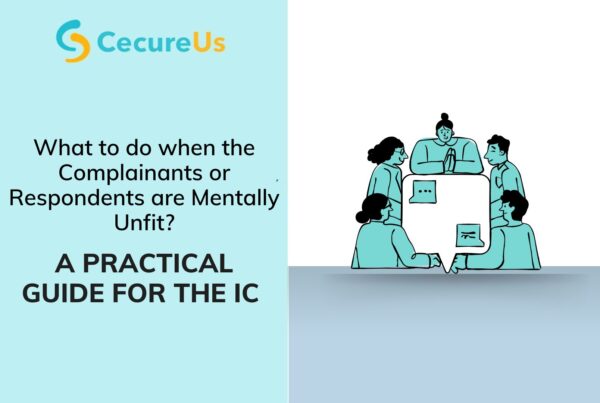
In the corporate world, we define diversity as a coordinated effort to accommodate a broad spectrum of employees from various backgrounds under one roof. This definition can make it easy to club all forms of diversity under one umbrella. However, this should not be the case as it can sometimes make it challenging to comprehend the complete concept of Inclusive Diversity in the workplace. As organizations continue to evolve, focussing on individual aspects of diversity and inclusion in workplaces will be fruitful in the long run. By limiting our conception of inclusive diversity, we limit the scope of our growth. To begin with, knowing that diversity extends beyond just one category is a good foundation for strategizing and implementing inclusive diversity in the workplace.
In this blog, We explain the 7 prime classifications of diversity in workplaces.
Gender Diversity:
Gender ratio has become one of the top focuses of several organizations when implementing inclusive diversity in the workplace. Gender is no longer male and female, but it is a spectrum. Gender diversity is not restricted to hiring employees to increase the gender ratio or sensitizing the employees, but gender diversity is also about redefining the organization’s policies for addressing employees with inclusiveness. For instance, organizations that address the employees as not just ‘he’ or ‘she,’ but use more inclusive language like ‘they,’ ‘them,’ or ‘theirs’ in handbooks, application forms, and conversations in the workplace appear more sensitized on gender diversity.
Regional and cultural diversity:
Culture reflects an employee’s heritage and upbringing; their communication, the foods they eat, their world views, etc.. differ from one individual to another based on the culture. Understanding and placidly integrating these differences is the basis for a good and successful organizational culture, and such differences should be valued deeply.
Organizations must mandate hiring employees from diverse states, religions, and cultures to contribute to a wholesome work and learning experience among employees in the workplace. This is vital for BPOs that provide 24×7 uninterrupted support, irrespective of cultural and religious holidays, to their end customers.
Hiring employees with disability:
Studies show that almost 15% of the global population has some form of disability. Since the scope of what constitutes a disability is very broad, organizations must consider and direct the committees into hiring people with disability for a diverse workforce and educate their employees about inclusion to make people with disabilities feel included in the workplace. Disabilities are not restricted to physical and evident forms, but there are also many invisible disabilities that employees should be aware of, like asthma, depression, ASD, Dyslexia, Diabetes, and ADHD, to name a few.
Generational Diversity:
One of the contributing factors to an organization’s success is the presence and inclusion of employees belonging to various generations, i.e., Gen X, Gen Y, Gen Z, and baby boomers. Hiring and retaining multiple talents across generations will contribute to an organization’s strategy, stability, structure, innovation, mentoring, and agility to meet the dynamic end-customer demands. Collaborating the strength of each generation in the teams will boost the productivity and success of an organization.
LGBTQ:
In the past couple of years, there has been an increased awareness of the LGBTQ community, especially the corporate community. Employees are being sensitized about the inclusion of the LGBTQ, and the hiring processes have become diverse and inclusive. Statistics back the claim that almost 10% of employees in any organization are already a part of the LGBTQ community. Every organization must train its leaders to use inclusive language when addressing a team of employees. The policies and handbooks must use inclusive language as well. Here are a few examples of LGBTQ inclusive language while addressing employees in the workplace.
| Dos | Don?ts |
| Folks, colleagues, team, people | ladies and gentlemen |
| Parental leave | Maternity and Paternity leave |
| Partner, Spouse | Husband, wife, boyfriend, girlfriend |
| First names, non-gender specific titles like Mx or M | Ms., Mr., Mrs. |
| Mail clerk, Chairperson | Mailman, Chairman |
| Sexual Orientation | Sexual Preference |
Racial and Ethnic Diversity
Diversity in ethnicity brings varied interests into a team.It sets the base for defining an organization’s culture. Ethnic diversity also highlights that implementing types of diversity should not just be a matter of box-ticking. Instead, it is a chance to engage with various employees, comprehend what is important to them, and ensure they feel included within the current workplace culture.
Bringing veterans into the workforce:
Returning veterans face innumerable struggles in their efforts to reintegrate into civilian life. Veterans are a unique talent pool with a wealth of skills, attitude, experience, and qualifications that make them ideal hires in the corporate world. They are all-around talent, versatile, and adaptable. Providing opportunities for veterans in the workplace will boost productivity and innovation in any organization.
If you are an employer in a dilemma about how to get your inclusive organizational diversity started, implementing these 7 classifications would be the right step.
For more blogs and articles, visit our official website. Contact us for workshops and queries related to POSH, EAP(Employee Assistance Program,) and Diversity and Inclusion.




